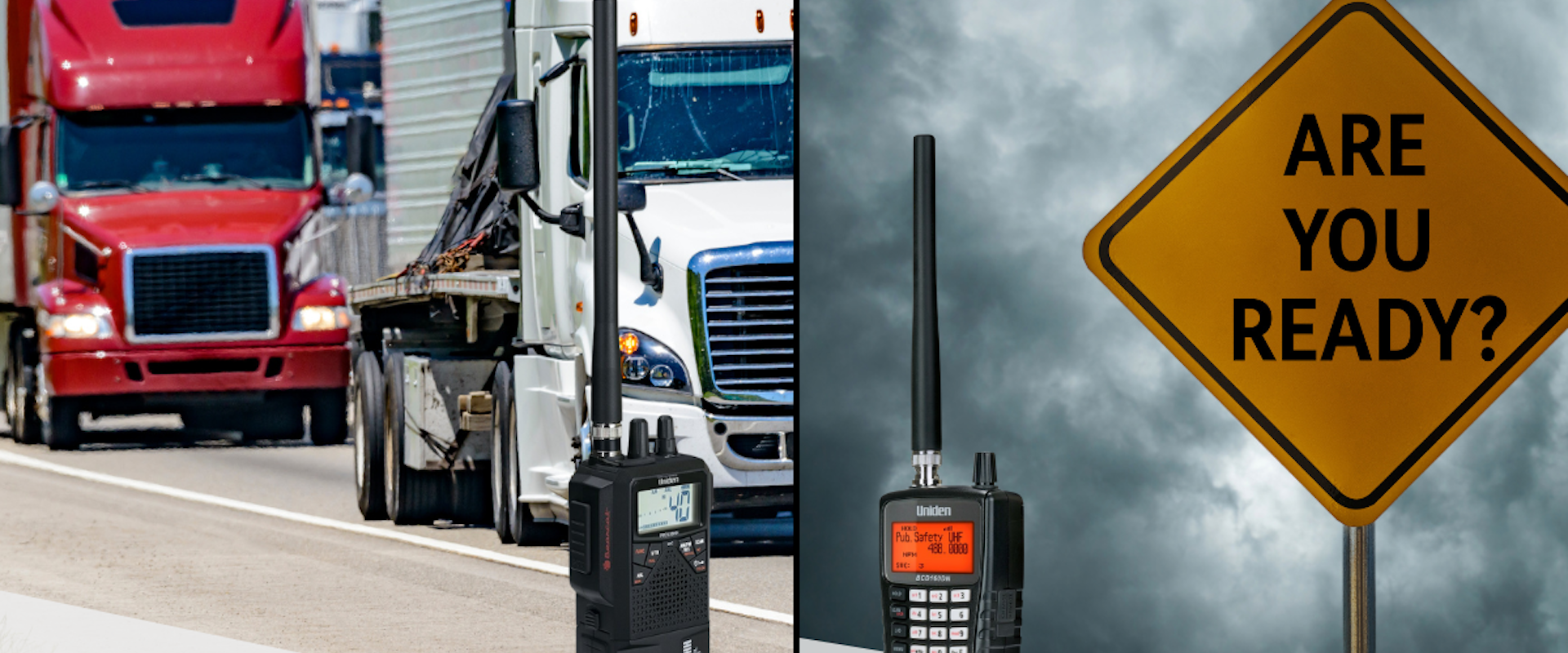CB vs Walkie Talkie vs Scanner: What Do You Actually Need?
Share
When storms, long road trips, or large events disrupt normal communication, people often turn to radios. But confusion is common: what’s the difference between a CB radio, a walkie talkie, and a scanner? They may look similar, but their functions are very different. Choosing the right tool can mean the difference between staying connected and being left in the dark.
This article explains how each device works, what it’s best suited for, and how to decide which fits your needs.
What Is a CB Radio?
A CB radio (citizens band radio) is a two-way communication tool designed for drivers, convoys, and groups traveling together. Unlike phones, it doesn’t depend on cell towers or Wi-Fi. Anyone tuned to the same channel can hear and respond instantly.
CB radios are most common on highways, in trucking, RV travel, and in NASCAR fan convoys. They let drivers share directions, call out hazards, and stay coordinated over miles of road. Their range depends on terrain and antennas, but they’re built for vehicle-to-vehicle communication that works when service drops.
For road trips, off-grid travel, and convoy culture, a CB radio remains the standard because it is simple, direct, and reliable.
Uniden police scanners like the Bearcat series have long been trusted by travelers, preppers, and households for this reason: they give direct access to critical information when other channels go silent.
What Is a Walkie Talkie?
A walkie talkie is a handheld two-way radio designed for short-range communication. Unlike a CB radio, which can cover miles on highways, walkie talkies usually work within a few hundred yards to a couple of miles, depending on terrain and signal strength.
They are common at campsites, construction sites, or for family outings where quick, simple communication is needed. Walkie talkies are easy to carry and don’t require installation, but they aren’t suited for long-distance convoys or for monitoring emergency channels the way a CB radio or radio scanner can be.
Walkie talkies are practical for local coordination, but they’re not replacements for CB radios on the road or scanners during storm season.
What Is a Radio Scanner?
A radio scanner is built for listening, not talking. Unlike a CB radio or walkie talkie, scanners don’t transmit. Instead, they monitor a wide range of frequencies — from local police and fire to EMS, weather, and public safety.
At a NASCAR event, scanners let fans follow race operations and emergency channels in real time. On the road, they provide updates on accidents, traffic slowdowns, and approaching storms. At home, they are part of storm-prep kits, keeping families informed when the power is out and cell networks collapse.
Key Differences and When to Use Each
- CB Radios → Best for drivers, convoys, and off-grid groups. They allow two-way communication over long distances without relying on cell service. Ideal for NASCAR fans traveling in caravans, truckers, and RV owners.
- Walkie Talkies → Best for short-range coordination. They’re portable and convenient for campsites, events, or small group activities, but they don’t replace the reach of CB radios or the information depth of scanners.
- Radio Scanners → Best for situational awareness. They monitor police, fire, EMS, and weather channels in real time. Essential during storms, power outages, and large events where information moves faster over radio than the internet.
In practice, many households and travelers use these tools together: a CB radio for staying in touch, walkie talkies for simple, local communication, or a scanner for critical updates
Comparison: Scanner vs CB vs Walkie Talkie
| Feature / Use Case | CB Radio (Citizens Band) | Walkie Talkie | Radio Scanner (Police/Emergency) |
| Primary Function | Two-way voice communication | Short-range two-way voice communication | Listen-only to public safety, EMS, weather, race ops |
| Range | Several miles (depends on terrain /antenna) | A few hundred yards to a couple of miles | Wide frequency coverage (no transmit) |
| Best For | Convoys, road trips, trucking, RVs | Campsites, events, family outings | Storm preparedness, NASCAR events, emergency awareness |
| Power Source | Vehicle-mounted or handheld with batteries | Handheld, battery-powered | Handheld or base unit, usually AC + backup battery |
| Network Dependence | Independent. No cell towers or Wi-Fi needed | Independent. No cell towers or Wi-Fi needed | Independent. No cell towers or Wi-Fi needed |
| Limitations | Can’t monitor EMS /weather | Very limited range, casual use only | Can’t transmit voice |
Takeaways
- CB radios are the standard for convoy communication and off-grid travel, offering reliable two-way voice over long distances.
- Walkie talkies are convenient for short-range coordination but limited compared to CB radios and scanners.
- Radio scanners (including police scanners) provide real-time access to emergency, weather, and event channels, making them essential for storm preparedness.
- For full coverage, many fans and households combine them: CB radios for talking, scanners for listening, and walkie talkies for quick local use.
